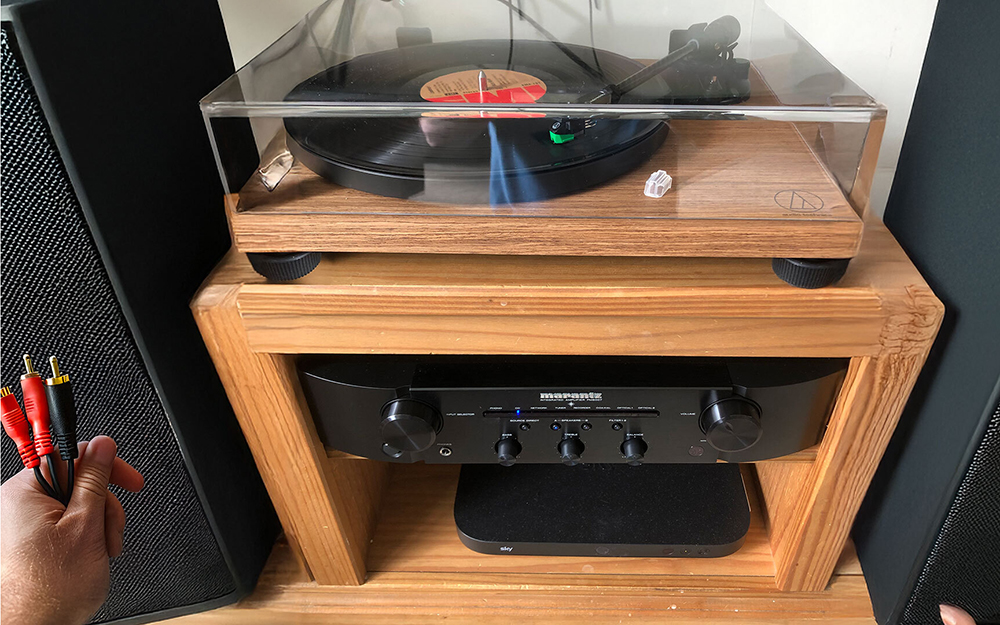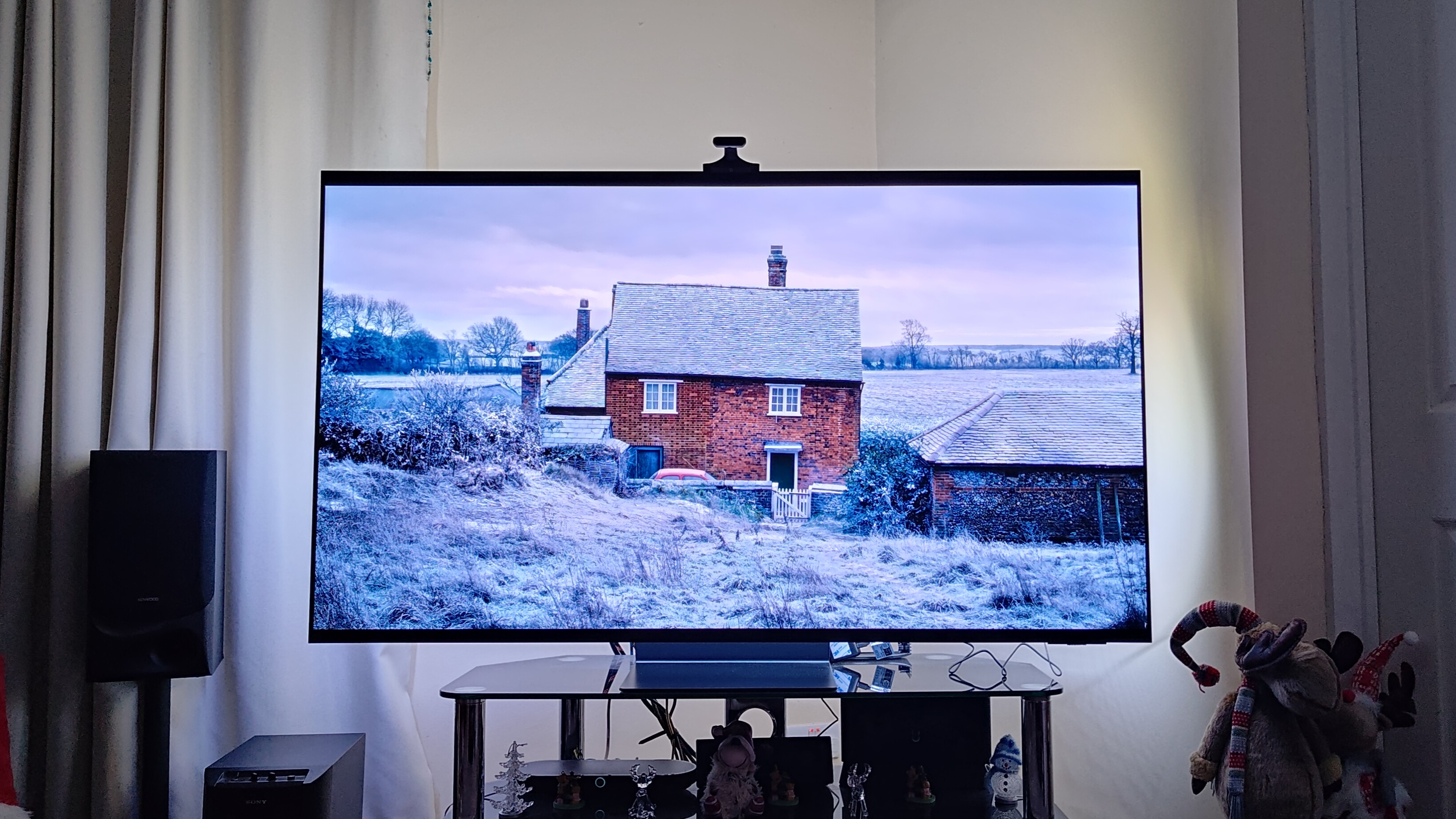
This must be a regular hazard for anyone who spends their life surrounded by hi-fi and AV equipment: when I visit friends, whether just for dinner or a longer stay, I’ll inevitably check out the systems by which they play their music and watch their TV and movies. Indeed some friends start apologising for their hi-fi systems even before I’m through the front door, perhaps because they think I will only appreciate systems costing megabucks (I actually far prefer high-value systems that deliver stonking sound). Other friends may be using Sonos, or small Bluetooth speakers which they think sound pretty wonderful, and in their way they do, if you have no hi-fi basis for comparison, so I rarely spoil their happiness by mentioning what they’re missing.
If I worked in a hi-fi shop, I might (if requested) be able to advise on better gear, and perhaps then arrange them a deal. As a reviewer, I can’t help them with kit directly, but I can advise on cost-effective upgrades, and on occasion I’ll spot a horrendous schoolboy error which can be fixed without any outlay at all, thereby transforming their sound as if by magic.
On a recent trip to the UK, I did one of each of these types of system improvements – and on both occasions, they yielded some useful lessons.
The first problem had been flagged to me well in advance as I’d been involved in getting their current hi-fi system in place, but sadly it was no longer working. This had been for my sister and brother-in-law in Wales, after they inherited a fairly enormous vinyl LP collection from my father. I had shipped his (and my own) nice collection of 45rpm singles to Australia, along with his Garrard 401 turntable, so at the time they had nothing there on which to play all this vinyl.
They had fairly minimal space for a system, so wanted something simple, and I had suggested a Pro-Ject turntable that had not only an internal phono stage but an internal amplifier as well, to which we added an excellent pair of secondhand Q Acoustics speakers I’d located from Australia via the power of Gumtree UK (rather confusing the seller in a small Welsh town by calling from Sydney to tell them a buyer was on the way down the road with cash if the speakers were still available). Which they were, and of course it later turned out that he already knew my brother-in-law, as does everyone else in that town. During my visit this time, someone walked past my brother-in-law without acknowledging him, and I joshed – "Ah, is that someone you actually don’t know?” To which he replied – "Oh I know him alright, we’re just not talking…"
Anyway, a problem had now developed: the right channel was cutting in and out. They thought it was the speaker, but I suspected the amplifier in the turntable, partly because passive speakers so rarely go wrong in that way. Once I arrived, I diagnosed the problem by switching the cables and checking the phono outputs, and yes, it was the amp section gone bung. A repair might have been possible, but to be honest, I hadn’t been impressed with how the Pro-Ject’s internal amp was driving the Q Acoustics speakers, and besides, I had never previously realised how they were listening to their TV, which was wall-mounted above the system.
Despite having the nice deep black-gloss Q Acoustics speakers right below the TV, they had perched a miniature soundbar on top of their turntable’s lid, running a minijack cable from the headphone socket of the TV to the soundbar. So they listened to TV and movies through the mini-soundbar, and to their vinyl through the turntable with its underpowered internal amp.
The latest hi-fi, home cinema and tech news, reviews, buying advice and deals, direct to your inbox.

Seeing that combo, I suggested we start again. Junk the Pro-Ject and order in a nice manual Audio-Technica turntable with an AT-VM95E cartridge, and a Marantz PM6007, a great, no-frills, no-streaming Class AB hi-fi stereo amplifier which has both a phono stage and optical inputs. We plugged the turntable into the phono input; I also ordered a £12 optical cable with a useful right-angle plug at one end (the wall-mounted TV had very little space behind), thereby replacing the minijack cable and mini-soundbar with an optical link between the TV and the Marantz amp. Now everything went through the Q Acoustics speakers. Sorted.
In fact, after a bit of A-Bing, I found that the Audio-Technica’s own built-in phono stage was significantly better than the one in the Marantz amp, and also avoided a little earth hum, so I instead plugged the turntable’s line-level output into the CD input of the Marantz. Confusing for them, admittedly, to select ‘CD’ to play vinyl, but overall this upgrade was transformative. We were soon belting out vinyl without any volume constraints, the speakers audibly thrilled to be given some real power at last.
Meanwhile, the TV now sounded real and potentially enormous when turned up, so my brother-in-law perked up greatly at the realisation that he could play Fallout on his PS5 at high volume this way, while my sister, who goes to bed earlier than he in the room immediately above, was somewhat more alarmed by the same realisation.
But she was soon convinced by the upgrade when we played a new video of my talented nephew playing keys in his cosmic funk band Muttnik at a festival; I did the nudge-nudge thing with the Marantz volume control until we were nigh-on raising the roof. I was extremely pleased with this, particularly impressed by the Marantz’s performance and the transformation it wrought on the dynamics of the Q Acoustics boxes.
“Great speakers!”, they all said, of course. But it was the amp that made the difference. (It has a ‘Pure Direct’ button, I said. Never turn that off!)
Lesson one: never underestimate the importance of a good amplifier.
Lesson two: try not to use the minijack headphone output of your telly unless you have absolutely no alternative.
No anti-skating on the Lakes!
Towards the end of my holiday I headed to the Lake District to stay with one of my closest friends from school days; he had been the bass player in my school band ‘Flem’ – and was also in nearly everyone else’s school bands, actually, since bass players were relatively rare back then. His wonderful wife is a certified rock chick (self-certified, otherwise I couldn’t possibly use the term); she knows as much about Led Zeppelin as any of us, and far more about many other bands of general heaviness both old and new (including Nothing But Thieves, which she pitched to me so strongly during my visit that I began to wonder if she somehow gets royalties). My bass-playing friend and I had been at school in core Plant/Bonham Midlands territory, and there was a rule back then that if you met a girl who knew all the Zeppelin lyrics, you married her, and fast (which is still good advice).
They live in a ridiculously idyllic village where the pub internet doesn’t work so you get all your drinks on a tab, before stumbling home to their lovely home looking out one way onto craggy Scafell and Scafell Pike, and the other way out over Fleswick Bay to the mountains of the Isle of Man. I almost stopped missing Sydney.
In their living room I again found two separate audio systems in use. First, there was a classic (in terms of both configuration and age) hi-fi system comprising a Pro-Ject turntable – this one was fully manual with neither phono stage nor amp – playing into a Rotel amplifier, and onto a pair of Celestion speakers.
At the other end of the room was a Samsung TV playing into a Samsung soundbar with a wireless subwoofer.
At first glance, I didn’t see any reason to mess with this layout; the two systems clearly weren’t going to be combined, and both are potentially great systems. My friend did say he didn’t think he had got the tonearm weight quite right on the turntable, and that it ‘skated’ alarmingly sometimes.
The arm weight was easily fixed; it had indeed been rather light.
When I looked at the anti-skating, it was the superior hanging weight type, rather than a dial or fixed spring. And looking closely, I saw that the weight was hanging off the curly thin hooky bit OK, but was not actually attached to the tonearm at all. So it was applying precisely zero anti-skating force in either direction.
I spent a few minutes first untangling the weight from its pointless hanging position, then doing the always fiddly job of getting the nylon loop over the little nub on the tonearm. Job done. The turntable system was now sounding lovely and not skating.

Lesson three, then: RTFM, mate, as they say on helplines everywhere. And if you don’t have the manual, Google it. Even with my vast experience and naïve optimism, I follow the manual when setting a turntable, though admittedly for most other hi-fi I read manuals later, to see if I’ve missed anything useful. The exception for the RTFM rule, however, is manuals for multichannel receivers, which are often nightmarish in their complexity, so that anyone trying to read them before starting is likely to end up dissolved Squonk-like in a pool of tears. That’s why many such AV receivers have excellent on-screen instructions that display on your TV screen, walking you through the set-up. These are often called ‘wizards’ – I’m not sure why, given that most fantasy epics would suggest that following a wizard invariably leads to trouble of one sort or another. But when implemented well, an on-screen wizard can be infinitely more friendly than an encyclopaedic AV receiver manual, which should be stowed or bookmarked only for reference at moments of extreme confusion.
Now, how about my friend’s Samsung soundbar and wireless subwoofer? You might perhaps be expecting me here to start criticising soundbars in general. But no, I am a great fan of Samsung’s soundbars. Ever since the Korean company set up a Californian audio laboratory and brought in the great Allan Devantier, with his Floyd Toole schooling and Harman experience, for the sole task of making great soundbars, well, that’s exactly what they’ve done.
I think my friends mentioned that someone had installed these for them; I rather hope not, because of two things. Firstly, the Samsung TV was paired with the Samsung soundbar via Bluetooth. Convenient, yes; easy, yes. Optimal sound? No. The TV has an optical output; the soundbar has an optical input, so I ordered another optical cable, this time a nice chunky one for all of £5, so I was able to make that physical connection the next day. (And I was impressed that the TV’s remote still adjusted the soundbar’s volume; I had expected to lose that benefit by going optical, so well done Samsung.)
Yet no matter how much I thumbed up the ‘Woofer’ control on the remote, there was bugger all bass emerging from the TV system. It made no difference at all. I couldn’t work it out. Was the wireless subwoofer not paired?
I went over and picked it up – and it wasn’t plugged in. No mains cable was attached.
“But it’s wireless, isn’t it?”, offered my mate as an explanation.
Ah – yeh, but no. Lesson four: a wireless subwoofer does not mean that the subwoofer is fully wireless. It means that the signal travels wirelessly from the soundbar to the subwoofer. I’m afraid the subwoofer still needs a power cable.
With this in place, they were rather surprised to find that their TV sound system, after several years in place, suddenly sounded rather better. We enjoyed a first night of YouTube, picking bands alphabetically in turn, and a second night playing vinyl, followed by a final visit to the pub to pay off our accounts in cash. This is exactly how hi-fi should be enjoyed.
Lesson five: a great music system doesn’t have to cost the Earth, while a little close attention to detail may yield easy ways to improve your sound at almost no cost at all.
Lesson six: invite me over for a holiday.
MORE:
What Hi-Fi? Awards 2024 – less than two weeks to go!
This overrated hi-fi feature is an excellent concept poorly executed
10 iconic albums from 1984 celebrating their 40th anniversary this year

Jez is the Editor of Sound+Image magazine, having inhabited that role since 2006, more or less a lustrum after departing his UK homeland to adopt an additional nationality under the more favourable climes and skies of Australia. Prior to his desertion he was Editor of the UK's Stuff magazine, and before that Editor of What Hi-Fi? magazine, and before that of the erstwhile Audiophile magazine and of Electronics Today International. He makes music as well as enjoying it, is alarmingly wedded to the notion that Led Zeppelin remains the highest point of rock'n'roll yet attained, though remains willing to assess modern pretenders. He lives in a modest shack on Sydney's Northern Beaches with his Canadian wife Deanna, a rescue greyhound called Jewels, and an assortment of changing wildlife under care. If you're seeking his articles by clicking this profile, you'll see far more of them by switching to the Australian version of WHF.
